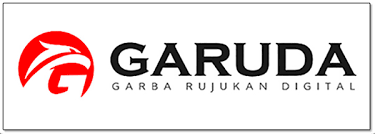ETHICAL PRINCIPLES AND PUBLICATION POLICY
The Journal of Innovation and Teacher Professionalism (JITPro) and its editorial board fully adhere to the ethical guidelines established by the Committee on Publication Ethics (COPE).
JITPro follows the COPE Code of Conduct and Best Practice Guidelines for Journal Editors as well as the Code of Conduct for Journal Publishers to ensure ethical publishing standards.
Ethical Guidelines for Journal Publication
Duties of Editors
Publication Decisions
The editorial board is responsible for determining which submitted articles should be published. This decision is based on reviewer recommendations, legal considerations (e.g., libel, copyright infringement, and plagiarism), and the journal’s editorial policies. Editorial decisions are made independently of the authors’ nationality, ethnicity, political beliefs, race, or religion.
Confidentiality, Disclosure, and Conflicts of Interest
- Editors must maintain strict confidentiality regarding submitted manuscripts and may only share information with the corresponding author, reviewers, potential reviewers, and editorial advisers.
- Unpublished materials from submitted manuscripts must not be used in any research by editors or reviewers without the explicit written consent of the author.
- Any funding sources for the research must be disclosed, along with the role of the funding institution in the research process and publication.
Author Relations
- Editors ensure that the peer-review process is fair, unbiased, and timely.
- To avoid conflicts of interest, manuscripts submitted by editorial board members undergo an independent review process.
- Authors receive clear guidance on authorship criteria and ethical publishing expectations.
Reviewer Relations
- Reviewers are encouraged to identify ethical concerns and potential misconduct, such as research bias, data manipulation, redundant publication, or plagiarism.
- Reviewers' comments must be constructive and professional. Any offensive or defamatory remarks will not be communicated to the authors.
- The journal recognizes the contributions of its reviewers and ceases collaboration with those who consistently provide poor-quality, discourteous, or late reviews.
Quality Assurance
- Editors ensure the academic integrity of published content, considering different sections' specific aims and standards.
- Research involving human participants or sensitive data must be approved by an appropriate ethics committee or institutional review board.
- Editors must promptly correct or retract any published errors, inaccuracies, or misleading statements.
Duties of Reviewers
Contribution to Editorial Decisions
- Reviewers play a critical role in the publication process by providing objective, well-reasoned evaluations to help authors improve their work.
- Personal criticism of the author is unacceptable.
Qualification of Reviewers
- Reviewers who feel unqualified to assess a manuscript or who cannot complete a review in a timely manner should notify the editor and decline the review.
- Reviewers must not evaluate manuscripts where they have conflicts of interest due to competitive, collaborative, or personal relationships with the authors or affiliated institutions.
Confidentiality
- Manuscripts under review are confidential and must not be shared with unauthorized individuals.
- Reviewers must not use privileged information obtained through peer review for personal benefit.
Acknowledgment of Sources
- Reviewers should identify missing citations and notify the editor of any substantial similarity or overlap between the manuscript and other published works.
Duties of Authors
Reporting Standards
- Authors must provide an accurate, objective, and transparent account of their research.
- Data should be presented truthfully, and fraudulent or knowingly inaccurate statements are unacceptable.
- Authors should be prepared to provide public access to raw data for at least two years after publication if required.
Originality, Plagiarism, and Concurrent Publication
- Authors must ensure that their submission is original and properly cites the work of others.
- Plagiarism, self-plagiarism, and redundant publication are strictly prohibited.
- Submitting the same manuscript to multiple journals simultaneously is unethical and unacceptable.
Disclosure and Conflicts of Interest
- Authors must disclose any financial or non-financial conflicts of interest that could influence their work.
- All sources of research funding should be fully disclosed.
Authorship of the Paper
- The corresponding author must ensure that all listed co-authors have significantly contributed to the research.
- All co-authors must approve the final manuscript before submission.
- Individuals who made minor contributions should be acknowledged rather than listed as co-authors.
Fundamental Errors in Published Works
- If an author discovers a significant error in their published work, they must immediately notify the journal editor and cooperate in retracting or correcting the paper.
Steps in the Publishing Process
1 – Submission
Authors submit their manuscripts following the author guidelines, including a separate title page.
2 – Pre-review
The editorial board screens submissions to ensure they:
- Follow author guidelines,
- Align with JITPro’s scope,
- Meet basic quality standards for publication.
3 – Editorial Evaluation
- The manuscript is assigned to an editor, who checks for ethical concerns, research misconduct, redundant publication, and plagiarism.
- If appropriate, the manuscript is forwarded for peer review by at least two experts.
4 – Peer Review
- The editor assigns at least two qualified reviewers to evaluate the manuscript.
- If necessary, an additional reviewer may assess statistical analyses.
- Reviewers examine the manuscript for scientific rigor, originality, and ethical integrity.
5 – Post-Review Decision
- After receiving reviewer feedback, the editor decides whether to:
- Accept the manuscript,
- Request revisions, or
- Reject the submission.
6 – Revision Process
- If revisions are required, authors must resubmit a revised manuscript along with a detailed response letter addressing reviewers’ comments.
7 – Final Decision
- The editor ensures that all necessary revisions have been made.
- If needed, reviewers evaluate the revised version.
- The editor makes a final decision to accept, reject, or request further revisions.

















